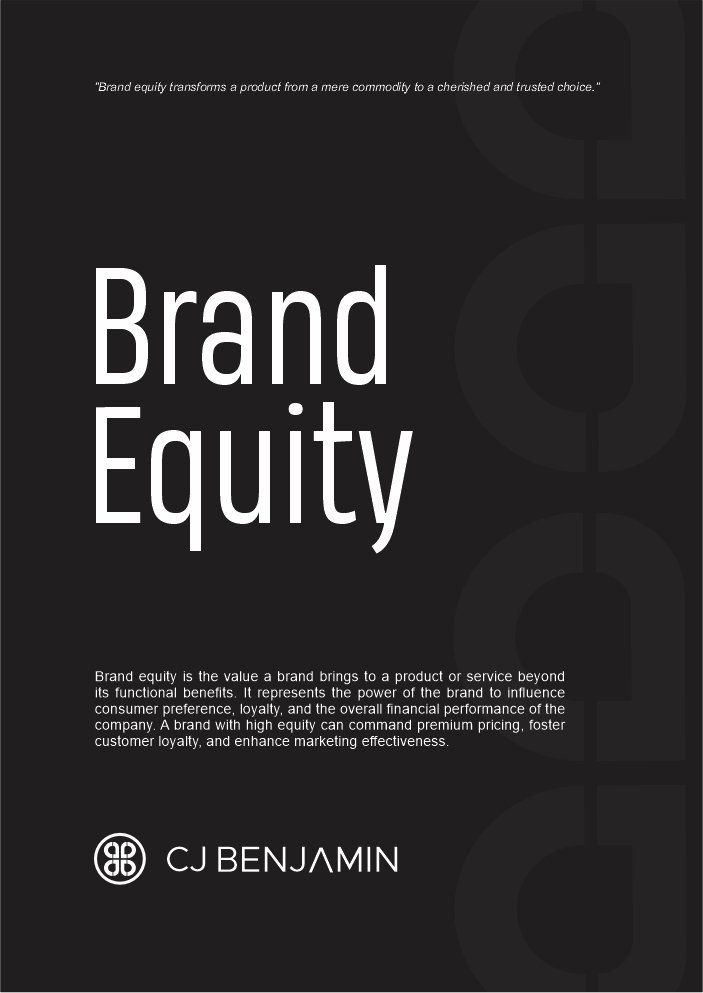Brand equity is the value a brand brings to a product or service beyond its functional benefits. It represents the power of the brand to influence consumer preference, loyalty, and the overall financial performance of the company. A brand with high equity can command premium pricing, foster customer loyalty, and enhance marketing effectiveness.
Components of Brand Equity
- Brand Awareness: The extent to which consumers are familiar with the brand and can recognize it.
- Brand Associations: The attributes, benefits, and experiences that consumers associate with the brand.
- Perceived Quality: The perception of the overall quality or superiority of a product or service relative to alternatives.
- Brand Loyalty: The degree of consumer attachment to a brand, often reflected in repeat purchases and positive word-of-mouth.
- Brand Assets: Proprietary assets such as trademarks, patents, and relationships that add value to the brand.
Measuring Brand Equity
- Financial Metrics: Evaluating the financial value a brand contributes to a company, such as premium pricing, market share, and revenue.
- Customer-Based Metrics: Assessing consumer attitudes and behaviors through surveys and market research to understand brand perception, loyalty, and awareness.
- Market-Based Metrics: Analyzing market performance indicators like brand strength in the marketplace, customer retention rates, and competitive positioning.
Benefits of Strong Brand Equity
- Premium Pricing: Brands with strong equity can often charge higher prices due to perceived value.
- Customer Loyalty: High brand equity fosters customer loyalty, leading to repeat business and positive word-of-mouth.
- Reduced Marketing Costs: Strong brands require less marketing effort to achieve the same level of consumer awareness and engagement.
- Negotiating Power: Brands with high equity have greater leverage with retailers, suppliers, and other business partners.
- Market Expansion: Strong brands can more easily introduce new products or enter new markets.
Strategies for Building Brand Equity
- Consistent Branding: Ensure all brand elements, including logo, color scheme, messaging, and tone, are consistent across all touchpoints.
- Quality Products and Services: Deliver high-quality products and services to build a positive reputation and meet consumer expectations.
- Customer Engagement: Foster strong relationships with customers through personalized experiences, excellent customer service, and active social media engagement.
- Innovative Marketing: Use creative and effective marketing campaigns to reinforce brand values and stay relevant in the market.
- Emotional Connection: Build an emotional connection with consumers through storytelling and brand values that resonate with their beliefs and lifestyles.
Examples of Strong Brand Equity
- Apple: Apple’s brand equity is built on its reputation for innovative technology, high-quality products, and a loyal customer base. The brand commands premium pricing, and its product launches generate significant media attention and consumer anticipation.Example: The release of the iPhone consistently leads to long queues at Apple stores, reflecting the strong brand loyalty and perceived value of Apple products.
- Coca-Cola: Coca-Cola is a prime example of a brand with strong equity. The brand’s global recognition, consistent branding, and emotional connection with consumers through memorable advertising campaigns contribute to its high equity.Example: Coca-Cola’s “Share a Coke” campaign personalized bottles with names, creating a personal connection with consumers and boosting sales and brand engagement.
- Nike: Nike’s brand equity is driven by its association with high-performance athletic wear, endorsements from top athletes, and powerful marketing campaigns like “Just Do It.”Example: Nike’s collaboration with athletes like Michael Jordan has created iconic product lines (e.g., Air Jordans) that drive significant sales and brand loyalty.
- Disney: Disney’s brand equity is rooted in its long history of providing high-quality entertainment and creating magical experiences for children and families.Example: The strong emotional connection with its audience is evident in the success of its theme parks, movies, and merchandise, all of which benefit from the powerful Disney brand.
Challenges in Maintaining Brand Equity
- Market Changes: Shifts in consumer preferences and market dynamics can impact brand equity.
- Competition: Increased competition can erode brand equity if competitors offer superior value.
- Brand Dilution: Overextending a brand into too many product categories can dilute its value.
- Negative Publicity: Scandals, product failures, or negative press can significantly harm brand equity.
Brand equity is a vital asset for any company, influencing consumer behavior, financial performance, and market position. Building and maintaining strong brand equity requires a consistent focus on delivering quality, engaging with customers, and staying true to the brand’s core values. By understanding and leveraging brand equity, companies can create lasting value and achieve long-term success in the marketplace.



